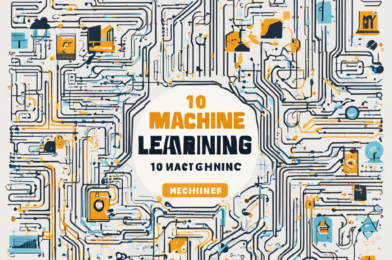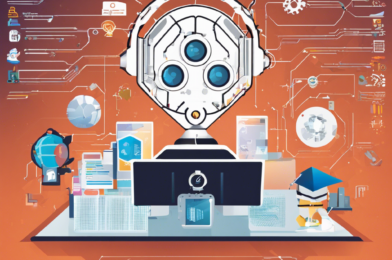
Introduction to Edge AI and Mobile Computing
Edge AI represents a revolutionary shift in how we deploy artificial intelligence, moving computation from distant cloud servers directly to mobile devices and local hardware. This paradigm change brings machine learning capabilities right to your smartphone, tablet, or IoT device, eliminating the need for constant internet connectivity and reducing latency to near-zero levels. Traditional AI applications relied heavily on powerful cloud infrastructure, requiring users to send data to remote servers for processing before receiving results. However, edge AI transforms this model by embedding intelligent algorithms directly into the device’s processor, creating a more responsive and private computing experience. Mobile devices have become increasingly powerful, with modern smartphones featuring dedicated AI chips, neural processing units, and advanced graphics processors capable of handling complex machine learning tasks. This technological evolution has made it possible to run sophisticated AI models locally, opening up new possibilities for real-time applications, enhanced privacy protection, and improved user experiences across various industries and use cases.
The Technology Behind Edge AI on Mobile Devices
The foundation of edge AI on mobile devices rests on several key technological advancements that have made local machine learning processing feasible and efficient. Modern smartphones and tablets are equipped with specialized hardware components designed specifically for AI workloads, including Neural Processing Units (NPUs), AI-optimized chipsets, and dedicated machine learning accelerators. These components work alongside traditional CPUs and GPUs to handle the intensive computational requirements of neural networks and deep learning algorithms. Software frameworks like TensorFlow Lite, Core ML for iOS devices, and ONNX Runtime provide developers with the tools necessary to optimize and deploy machine learning models on resource-constrained mobile hardware. Model compression techniques such as quantization, pruning, and knowledge distillation play crucial roles in reducing the size and computational requirements of AI models without significantly compromising accuracy. Additionally, edge-specific model architectures like MobileNets and EfficientNets have been designed from the ground up to deliver excellent performance while maintaining minimal resource consumption, making them ideal for deployment on mobile devices with limited processing power and battery life.
Key Benefits of Running AI on Mobile Devices
Implementing AI directly on mobile devices offers numerous compelling advantages that are driving widespread adoption across industries and applications. Privacy and data security represent perhaps the most significant benefits, as sensitive information never leaves the device, eliminating concerns about data breaches during transmission or storage on remote servers. This local processing approach ensures that personal photos, voice recordings, biometric data, and other sensitive information remain completely private and under the user’s control. Reduced latency is another critical advantage, with edge AI enabling real-time processing and instant responses that are essential for applications like augmented reality, live translation, and voice assistants. Users experience immediate feedback without the delays associated with network communication and cloud processing. Cost efficiency becomes apparent through reduced bandwidth usage and lower cloud computing expenses, as organizations can minimize their reliance on expensive server infrastructure and data transfer costs. Offline functionality ensures that AI-powered features continue working even without internet connectivity, making applications more reliable and accessible in areas with poor network coverage or during network outages, which is particularly valuable for mission-critical applications.
Popular Applications and Use Cases
Edge AI on mobile devices has enabled a diverse range of innovative applications that leverage local processing power to deliver enhanced user experiences and new capabilities. Camera applications represent one of the most visible implementations, with smartphones now capable of real-time scene recognition, automatic photo enhancement, portrait mode effects, and night mode processing without requiring cloud connectivity. Voice assistants and natural language processing applications benefit tremendously from edge AI, enabling wake word detection, speech recognition, and basic command processing entirely on-device while preserving user privacy. Augmented reality applications rely heavily on edge AI for object detection, tracking, and scene understanding, creating immersive experiences that respond instantly to user movements and environmental changes. Health and fitness applications utilize edge AI for activity recognition, heart rate monitoring, sleep pattern analysis, and personalized coaching recommendations based on sensor data processed locally on the device. Gaming applications incorporate AI for enhanced graphics, intelligent NPCs, and adaptive difficulty levels that respond to player behavior in real-time. Security applications use edge AI for biometric authentication, including facial recognition, fingerprint analysis, and behavioral pattern recognition, ensuring secure access while maintaining user privacy through local processing.
Challenges and Limitations of Mobile Edge AI
Despite its numerous advantages, implementing AI on mobile devices presents several significant challenges that developers and organizations must carefully consider and address. Hardware constraints remain a primary limitation, as mobile devices have limited processing power, memory capacity, and battery life compared to cloud-based infrastructure, restricting the complexity and size of AI models that can be effectively deployed. Power consumption becomes a critical concern, as running intensive AI algorithms can quickly drain device batteries, potentially impacting user experience and device usability throughout the day. Model accuracy trade-offs are often necessary, as smaller, optimized models designed for mobile deployment may not achieve the same level of performance as their larger, cloud-based counterparts, requiring careful balance between functionality and resource constraints. Storage limitations pose additional challenges, as AI models can consume significant device storage space, competing with user data, applications, and media files for available capacity. Development complexity increases substantially when creating applications that must work efficiently across diverse mobile hardware configurations, operating systems, and device capabilities. Security considerations also arise, as locally stored AI models may be more vulnerable to reverse engineering, tampering, or extraction by malicious actors who gain physical access to devices.
Development Tools and Frameworks for Mobile AI
The ecosystem of development tools and frameworks for mobile AI has evolved rapidly, providing developers with comprehensive solutions for deploying machine learning models on various mobile platforms efficiently. TensorFlow Lite stands as one of the most popular frameworks, offering excellent support for both Android and iOS platforms with optimized model formats, hardware acceleration, and extensive documentation for developers. Apple’s Core ML framework provides seamless integration with iOS applications, supporting various model formats and offering automatic hardware optimization for different iPhone and iPad configurations. PyTorch Mobile enables developers to deploy PyTorch models on mobile devices with easy-to-use APIs and efficient runtime performance. ONNX Runtime provides cross-platform compatibility, allowing developers to use models trained in different frameworks and deploy them consistently across various mobile operating systems. Qualcomm’s Snapdragon Neural Processing Engine and MediaTek’s NeuroPilot offer hardware-specific optimizations for devices powered by their respective chipsets. Development environments like Android Studio and Xcode have integrated AI development tools, making it easier for mobile developers to incorporate machine learning capabilities into their applications. Cloud-based model training platforms such as Google Cloud AI Platform, Amazon SageMaker, and Microsoft Azure Machine Learning provide scalable training infrastructure while offering easy export options for mobile deployment.
Performance Optimization Strategies
Optimizing AI performance on mobile devices requires a comprehensive approach that addresses both model efficiency and hardware utilization to deliver the best possible user experience. Model quantization techniques convert high-precision floating-point weights to lower-precision integer formats, significantly reducing model size and improving inference speed while maintaining acceptable accuracy levels. Pruning methods remove unnecessary connections and neurons from neural networks, creating sparser models that require fewer computational resources without substantial performance degradation. Knowledge distillation allows smaller “student” models to learn from larger “teacher” models, capturing essential knowledge in a more compact form suitable for mobile deployment. Hardware acceleration becomes crucial for optimal performance, with developers leveraging specialized processors like GPUs, NPUs, and DSPs to handle specific AI workloads more efficiently than general-purpose CPUs. Memory management optimization ensures efficient use of limited device RAM through techniques like model splitting, layer-wise execution, and intelligent caching strategies. Batch processing and pipeline optimization can improve throughput by processing multiple inputs simultaneously and overlapping computation with data loading operations. Runtime optimization involves selecting appropriate inference engines, configuring optimal thread counts, and implementing dynamic resource allocation based on device capabilities and current system load conditions.
Future Trends and Emerging Technologies
The future of edge AI on mobile devices promises exciting developments that will further expand capabilities and applications while addressing current limitations through technological innovation. Advanced chip architectures are emerging with more powerful and energy-efficient AI accelerators, including neuromorphic processors that mimic brain-like computing patterns for ultra-low power consumption. 5G connectivity will enable hybrid edge-cloud computing models, where mobile devices can seamlessly offload complex computations to nearby edge servers while maintaining low latency and privacy benefits. Federated learning represents a transformative approach that allows mobile devices to collaboratively train AI models while keeping data local, enabling personalized AI experiences without compromising privacy. Hardware-software co-design is becoming increasingly important, with chip manufacturers and software developers working together to create optimized solutions that maximize performance while minimizing power consumption. Emerging AI model architectures like Vision Transformers and efficient neural architecture search (NAS) techniques are producing more capable models that can run effectively on mobile hardware. Integration with IoT ecosystems will expand mobile AI capabilities, enabling smartphones to serve as intelligent hubs for smart home devices, wearables, and automotive systems. As these technologies mature, we can expect mobile devices to become increasingly autonomous and intelligent, capable of handling complex AI tasks that currently require cloud processing while maintaining the privacy, speed, and reliability advantages of edge computing.








